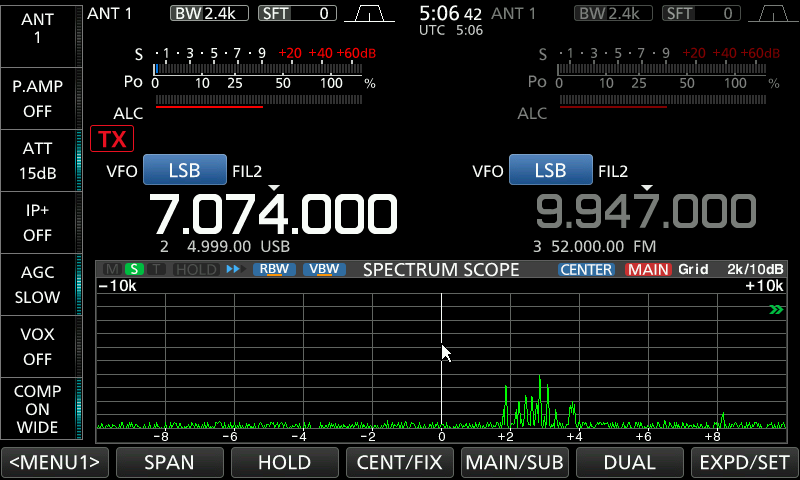
 |
RF gain management is the secret of optimum performance in a direct-sampling SDR receiver.
The limiting case for signal acceptance in a direct-sampling SDR receiver is the ADC clip level (typically approx. -10 dBm for an out-of-channel signal). The correct operating point for a direct-sampling receiver is where the band noise just registers on the S-meter, scope and waterfall. Especially on the lower bands, sufficient attenuation should be inserted (using the step attenuator and/or RF Gain control) to place the band noise at or just above the receiver's noise floor. The preamps should always be OFF on bands below 21 MHz; even on 14 MHz they are seldom useful.
In this way, the input level at which the ADC clips (OVF indicator lit) will increase by the amount of attenuation inserted. Nothing is lost, as signals below the band noise are inaudible, and the probability of clipping on signal peaks is reduced.
The IC-7610 Digi-Sel preselector (or an external preselector) will also be of assistance in reducing the effect of strong out-of-channel signals, especially on the lower bands.
Quick set-up procedure for Icom direct-sampling radios (7300, 7610, 9700, 705, R8600):
Tune off the signal and note S-meter reading on band noise alone (Example: S6).
Turn down RF Gain (RFG indicator will light) and/or insert attenuation until band noise just deflects the S-meter, and is barely visible on the spectrum scope and waterfall.
Tune in the signal again. Band noise will not stimulate AGC action; this will allow the AGC to operate only on the signal.
This is the optimum operating point for the receiver. On 7 MHz and below, the band noise can be as much as 12-15 dB above the receiver's noise floor.
See also: "dBm from Heaven" with an HF Transceiver.
Copyright © 2019 A. Farson VA7OJ/AB4OJ. All rights reserved.
Last updated: 07/07/2020